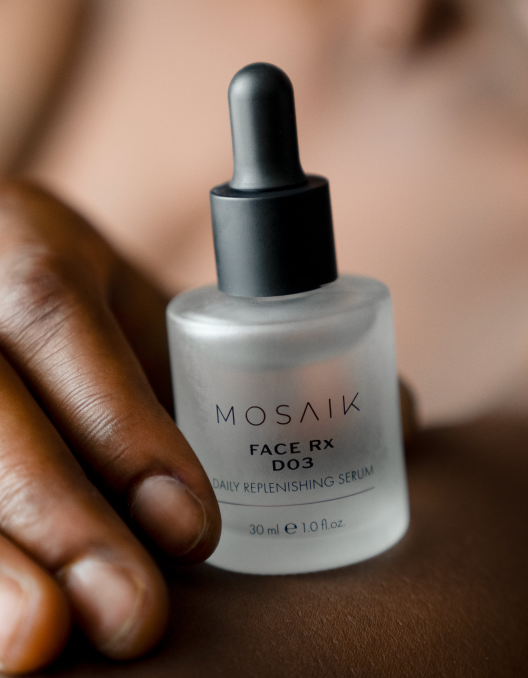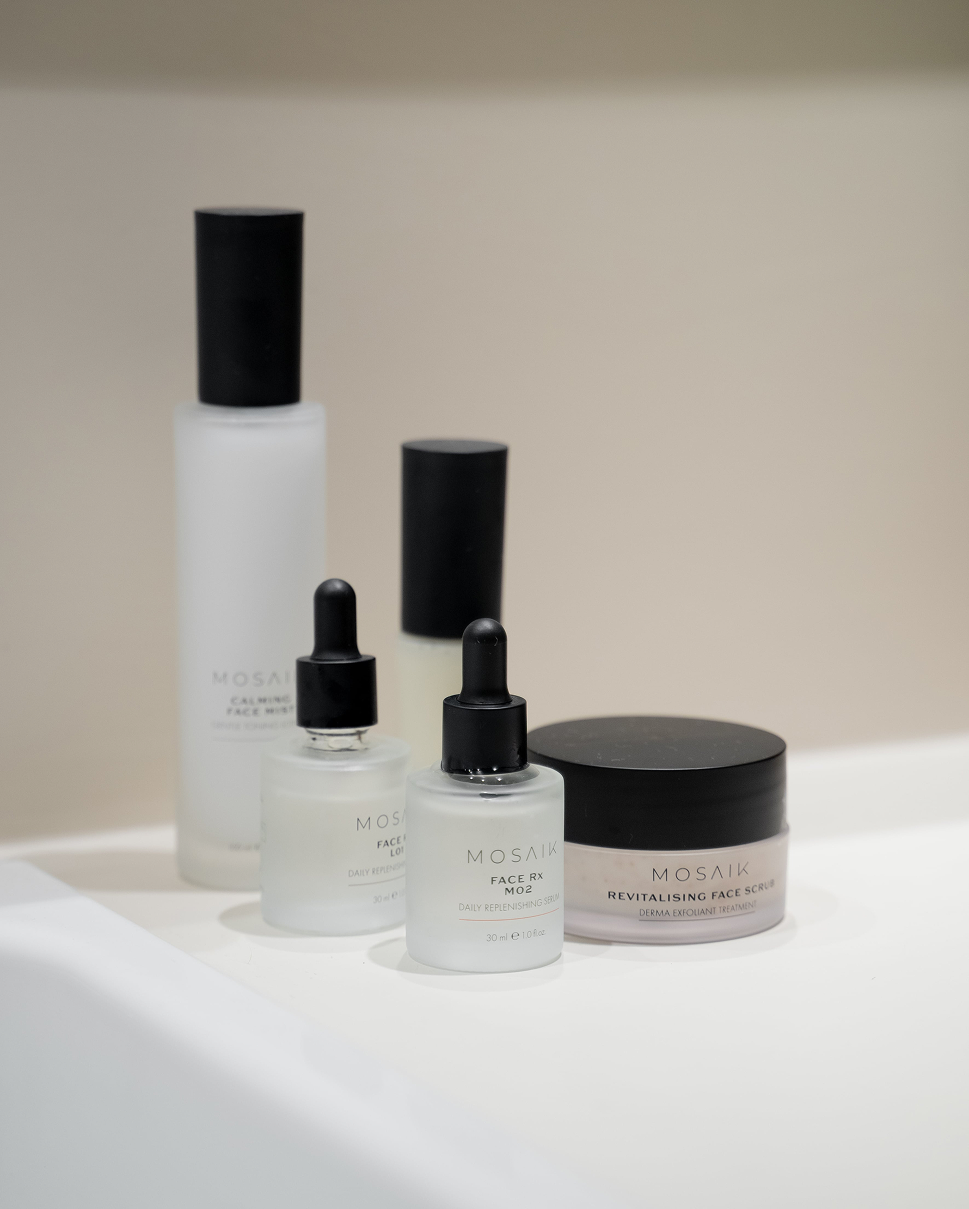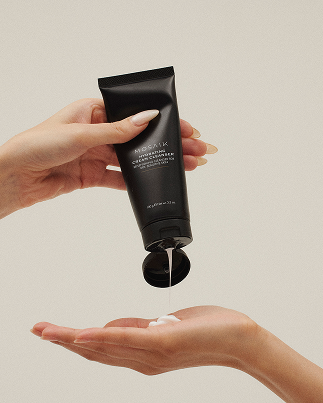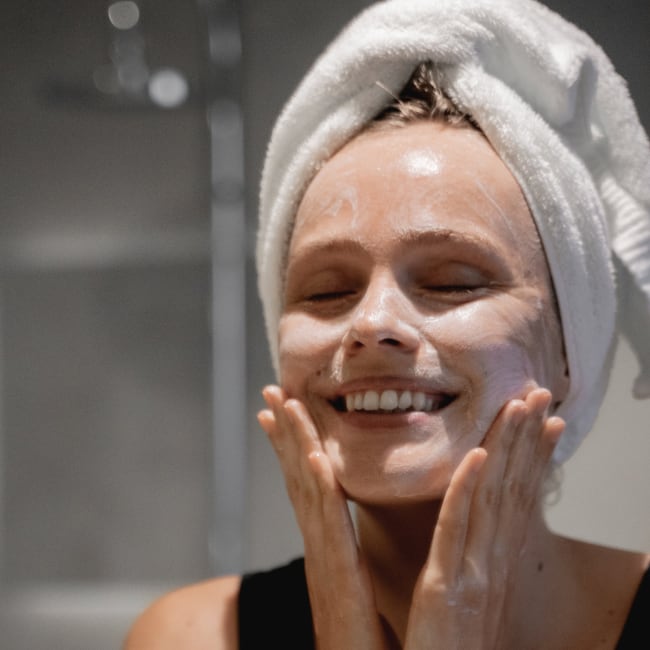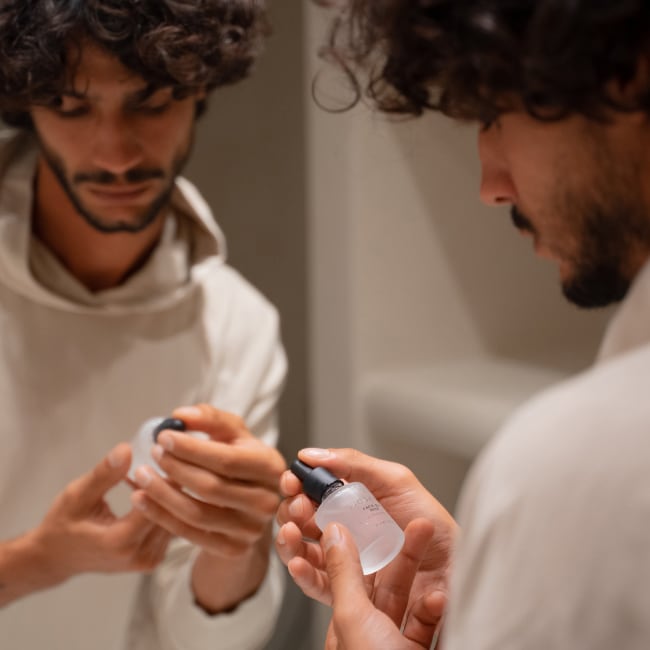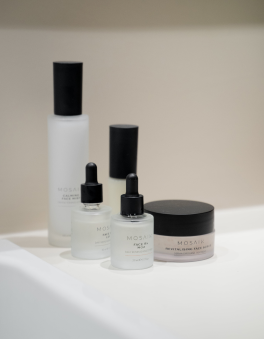In a world where skincare innovation moves faster than ever, a few key trends are shaping the future of skin health. From non-surgical technologies to simplified rituals and smarter actives, these movements share one message: skincare today is about balance, precision, and understanding your skin’s changing needs.
At MOSAIK, these aren’t passing fads — they echo our long-standing philosophy of thoughtful, inclusive care and science-backed simplicity.
High-Frequency Ultrasound for Skin Tightening
High-frequency focused ultrasound (commonly known as HIFU or MFU) devices, such as Ultherapy, Ultraformer, and the latest parallel-beam technologies, have gained prominence for non-invasive skin tightening and rejuvenation. A 2025 systematic review found these devices can improve laxity by 18-30% in the lower face, neck, and periorbital regions, with visible results lasting up to a year or more. The treatments are considered quick (typically under an hour), essentially painless, and present minimal side effects, with less than 5% of patients experiencing only mild, transient redness or swelling. Emerging protocols now enhance results by combining HIFU with biostimulatory fillers such as liquid polycaprolactone, simultaneously stimulating collagen and further improving texture and elasticity. These combination approaches represent a synergistic leap in achieving firm, smooth, rejuvenated skin without surgery or downtime.
Skinimalism: A New Skincare Philosophy
The “skinimalism” trend in 2025 represents a deliberate return to minimalist, barrier-supportive routines, favoring gentle products with short, transparent ingredient lists. Leading dermatologists attribute this shift to consumer fatigue from multi-step regimens and damage from overuse of strong actives. Skinimalist routines commonly center on hydrating cleansers, barrier creams rich in ceramides and peptides, and simple serums, particularly with niacinamide. The movement is also deeply tied to sustainability, as minimalist habits reduce both packaging waste and overall consumption. Instead of chasing perfection with product layering, skinimalism celebrates natural skin, promotes long-term health, and fosters authenticity in beauty representation across social media and brand marketing.
Tranexamic Acid and Niacinamide for Hyperpigmentation
Research in 2025 strongly supports the use of topical tranexamic acid (TXA), especially when paired with niacinamide, for the management of melasma and broader hyperpigmentation. Clinical studies highlight that a serum containing 1% TXA and 5% niacinamide offers comparable efficacy to gold-standard hydroquinone, with a significantly better safety and tolerability profile. Results include visibly brighter, more even-toned skin in as little as 8–12 weeks, with reduced inflammation and minimal irritation. Recent data show that combinations of TXA, niacinamide, and stabilized vitamin C truly optimize pigment clearance—helping fade melasma, PIH, and sun-induced spots. These advances are especially important for individuals who cannot tolerate hydroquinone or seek non-prescription alternatives.
New Research: Vitamin C and Epidermal Renewal
2025 has seen a significant focus on vitamin C’s biological potential beyond antioxidant activity. New studies reveal that topical vitamin C enhances epidermal renewal and thickening via DNA demethylation, promoting youthful skin structure and repair. When incorporated into multi-ingredient serums with niacinamide and hydroxy acids, vitamin C further accelerates pigment reduction and supports barrier healing, leveraging both its brightening and regenerative properties.
These advances collectively illustrate the movement toward integrated, science-driven skincare that values efficacy, safety, and barrier health, all while meeting modern consumers’ demand for simplicity, sustainability, and authenticity.

